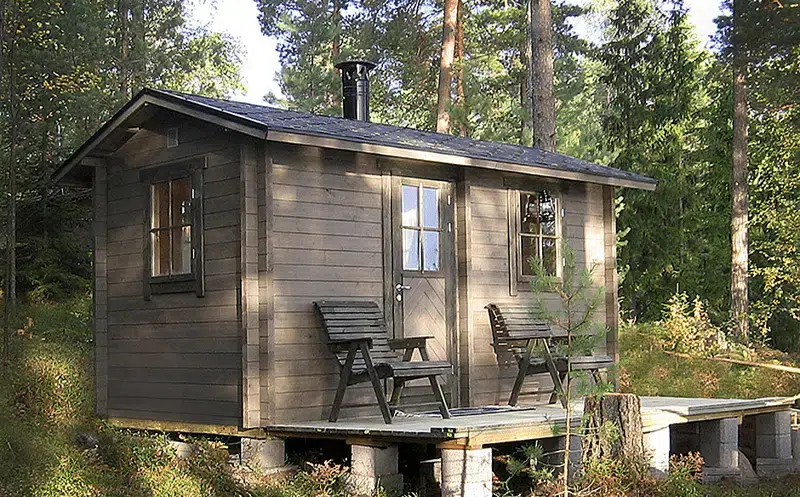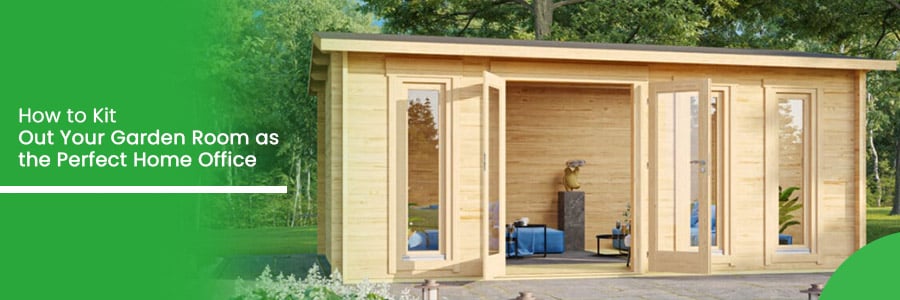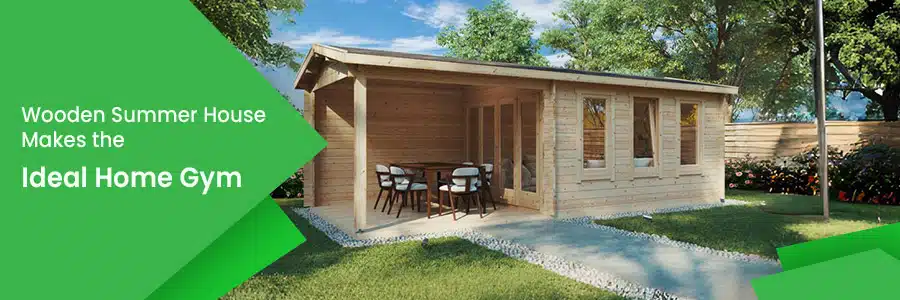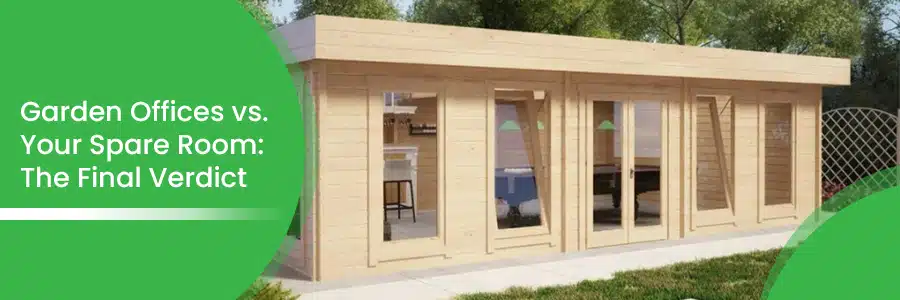Does Insulating the Summer House for All-Year Use Make Sense?
28.09.2017
Well, this is, of course, entirely dependent on how you want to use your summer house. Most usages that make you spend time in the summer house regularly are a good reason for insulation because it would make the summer house a much more comfortable place to stay during winter and during the heat of the summer.
Even if you use your summer house just for storage, an insulation would make sense if you store paper materials or other perishables there. Please note that already a slight heating, let’s say just enough to keep the frost out, would dry the air inside and make the summer house a better place to store things with metal parts, electrical tools or rechargeable batteries.
However, as we are not talking about garden storage boxes here, but about full-grown garden log cabins, in most cases mixed usages will apply to the summer house. The place to store gardening tools and the garden furniture during the winter might be the same place where you work out or where you retreat to as a garden office where you can find the concentration needed to make your work a success.
If your summer house has large windows, it might be the ideal place to keep frost sensitive plants during the winter
Some plants really like a lot of light but no high temperatures because it would make them grow “indoor-leaves” that would perish as soon as it gets more natural light and air outside. So storing them in a summer house just above frost level is just the right choice for some frost sensitive plants.
Enthusiastic gardeners might also use such a frost-free summer house to pre-grow plants like collards early in the year and after planting them out, replace them with tomatoes or courgettes that have to wait for their place in the garden until no more frost is to be expected.
Others are looking to expand the living space of the house for example to give a kid his or her very own realm, or to create a guest room, or even a little place to rent out for bed and breakfast on platforms on the internet.
Workshops are a favourite to set up in a summer house, studios, garden lounges, garden rooms for hobbies, an outdoor sauna, or a room to do handicrafts in are also in the charts.
In all of these cases, an insulation will make sense and spare you a lot of heating costs.
How to insulate the summer house?
Insulating a summer house is no big deal and can be done in just one or two days. When it comes to suitable methods and materials, there are different opinions. For example, many think that a damp barrier is absolutely necessary for an efficient insulation. While we tend to agree in cases of self-built constructions, or for those with quite thin walls below 40mm, we would say that for professionally prefabricated summer houses with walls thicker than that where the wall-planks are connected with double tongue and groove connection, a breathable insulation like for example with simple glass – or rock wool can be equally efficient and maintain the overall breathability of the wooden building which is, not to the least, one of the big advantages of timber summer houses compared to those made from plastic or steel.
Also, the question if there should be a space left between the insulation and the wooden wall is discussed controversially. We would tend to think, that the free space is a good idea if you decide to use a damp-barrier. In any case, the outside walls should be treated on the weather side and you should not allow for any water to penetrate to the inside.
Is it better to insulate the inside or the outside of the summer house?
Principally you have the choice between an inside-insulation or an outside-insulation. While applying the insulating material on the outside will spare you some space in the inside, it will also require a sturdy lining or another wall of wooden planks on the outside. If you can afford this, it might be an option. Another sturdy wall of timber on the outside would increase the thermal insulation once again. Below this outside timber wall, you could also place a layer of weather-resistant weather board which is still breathable.
Inside-insulation is an easier and also cheaper way because you just need any cheap lining on the inside to cover up the insulating layer. As this will be the last time you see the inside of the external wooden wall, it might be a consideration to use the opportunity for a final treatment with a wood preservative.
For the roof, of course, inside-insulation is the usual choice while for the floor, it depends on if you start the insulation on a summer house that has not yet been constructed or if you plan to insulate an already existing summer house. The logical and best way to insulate the floor would be to put the insulation material between the joists below the floor boards, but if you don’t want to take the floor completely out of your already constructed summer house to do that, another option is, of course, to put a layer of insulation on the floor boards and then add a stable layer of laminate or an additional layer of floor boards onto that.
Talking about easy ways to insulate your summer house: We have already made a practical guide on how to insulate your summer house from the inside for you to follow.
Insulating your summer house, log cabin, or garden shed will create a space for you that you can use all year round to take your summer house life to the next level!
Categories:
BlogWant to discuss over phone. Let us call back to you
If you need any additional info regarding any product, please fill in the below form and we will get back to you, usually the same or next working day.
Have any questions regarding some product?
If you need any additional info regarding any product, please send us your questions.



